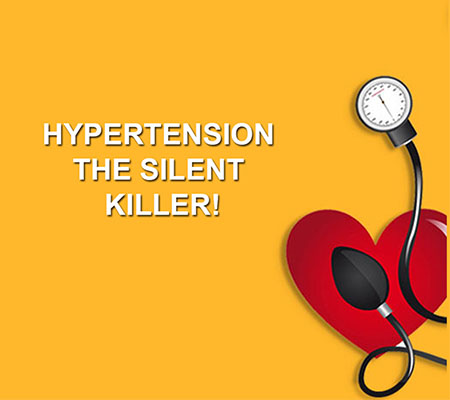
It’s Sunday October 24th 2021 and sales on Halloween costumes and decorations are popping up in the shops while the real-life horror of the pandemic is still with us… so what costume would you wear if you dressed up as “The Silent Killer”- a character we are all too familiar with- that also goes by the name Hypertension or High Blood Pressure. It lurks within the bodies of 1 in 3 adults over the age of 18 years in Trinidad and Tobago and according to the WHO fact sheets , less than half of hypertensive adults are aware of their diagnosis, only 35% have started some form of treatment and only 15 % have actually achieved good control! These averages reflect figures for Men and Women combined, but a subset analysis shows that women outrank men in their awareness of the diagnosis and their motivation to seek and adhere to treatment. While the highest percentage incidence is among those over 55, there has been a significant increase in the last 10 years in the adolescent population in parallel with the rise in Childhood Obesity. This evening we unmask the Silent Killer and arm ourselves with the best weapons for taking back control – you may not be a fan of the 1983 Movie Scarface- but you can say hello to my little friend -The Gut Microbiome!
Hypertension or High Blood pressure in adults is defined as a systolic blood pressure (SBP) of 140 mm Hg or greater and/or a diastolic blood pressure (DBP) of 90 mm Hg or greater, usually on 2 separate readings taken on at least 2 different occasions. Bear in mind that we always cater for circumstances in which blood pressure is elevated only in the doctor’s office but not when a patient is at home – a condition labelled as “White coat hypertension” reflecting the common practice of doctors wearing white coats. It is of vital importance that if patients have access to or can afford a home blood pressure kit, that they take readings on mornings after awakening and keep a record to show their doctor. Additionally they should bring the blood pressure machine to the visit so it can be checked for accuracy against the manual readings performed in the office.
Once you have been diagnosed with hypertension, how aggressive is your treatment plan going to be? Well, several factors are taken into consideration before making that decision- These factors include whether you are also a diabetic, a smoker or have high cholesterol? Are you a male over 60, a woman who is menopausal ,or is there evidence that hypertension has already started to cause damage to target organs such as the heart, the brain, the kidneys and the peripheral circulation? Are you already in heart failure? Did you have a minor or major stroke? Has your kidney function been reduced and are you spilling protein in the urine? Do your eyes show evidence of hypertensive retinopathy?
The more risk factors you have , the greater the risk for complications of hypertension and the more aggressive your management plan will be from the point of diagnosis. Paramount to the success of the plan will be lifestyle modifications – a directed focus to quit smoking, a structured exercise program that could be as simple as 30 minutes of brisk walking five times a week, a reduction in salt intake and beneficial practices towards reducing stress and improving sleep. But apart from reducing salt ,are there other changes in the diet that have an impact on the control of blood pressure ?
You may already be familiar with the DASH diet – an acronym that stands for Dietary Approaches to Stop hypertension , promoted by the national Heart , Lung and Blood Institute of the US Department of Health and Human Services. It emphasises a relatively high intake of Vegetables, fruits, legumes, nuts and whole grains alongside low fat dairy, and lower portions of lean meat , poultry and fish and a reduced intake of sweet desserts and beverages. It has shown benefits in both the reduction of blood pressure and cholesterol in various studies. As the mysteries of the Gut Microbiome began to unravel in the past 10 years, researchers all over the world have looked at various diseases and their possible corelation with our gut bacteria …and Hypertension has been no exception. Between 2015 and 2021 there are studies published from Australia ,Brazil, Canada, China, Dubai, Finland , Israel and multiple institutes in the United States focused on the Gut Microbiome and high blood pressure.
Some of the key and consistent findings were:
1. Compared to healthy individuals, hypertensive patients demonstrated a disruption in their gut bacteria composition with less diversity and species richness …a condition labelled as Gut Dysbiosis
2. Hypertension was reproducible in germ free mice by transplanting stool from hypertensive humans into the mice.
3. The production of specific short chain fatty acids by gut bacteria fermentation of soluble fiber, is reduced in hypertensive patients with butyrate being the molecule commonly affected. Butyrate has received particular attention for its anti-inflammatory properties and its role in Gut lining protection and energy metabolism. Now it is being looked at for its effects on cardiovascular tone.
4. Pregnancy induced hypertension and pre-eclampsia in overweight and obese women can be influenced by changes in their gut bacteria.
5. Obstructive sleep apnoea associated blood pressure elevation can be influenced by dietary changes that alter the gut microbiota in favour of butyrate producing bacteria.
With all these promising findings, it is not surprising that the DASH diet has shown itself to be beneficial in the management of hypertension as the fiber intake is relatively high and diverse and therefore favours the growth of a thriving and rich gut microbiome.
Hypertension is the most modifiable risk factor in the causes of cardiovascular disease. We can easily diagnose, monitor , treat and institute holistic interventions for a much better outcome and quality of life. It is time we turn the table on The Silent killer by using facts and fiber and to remember that Food is medicine and 30 grams of fiber daily from diverse sources of vegetables, fruits, legumes, nuts and whole grains may be the prescription you need to add to your current regimen to achieve your aspirations. Feel free to check out the other 11 episodes of this podcast at your convenience and drop by our Facebook page @the gut nerd Caribbean for ongoing updates and announcements…Until next time… I wish you the best of flow as we continue our journey to becoming heroes of our own health!




